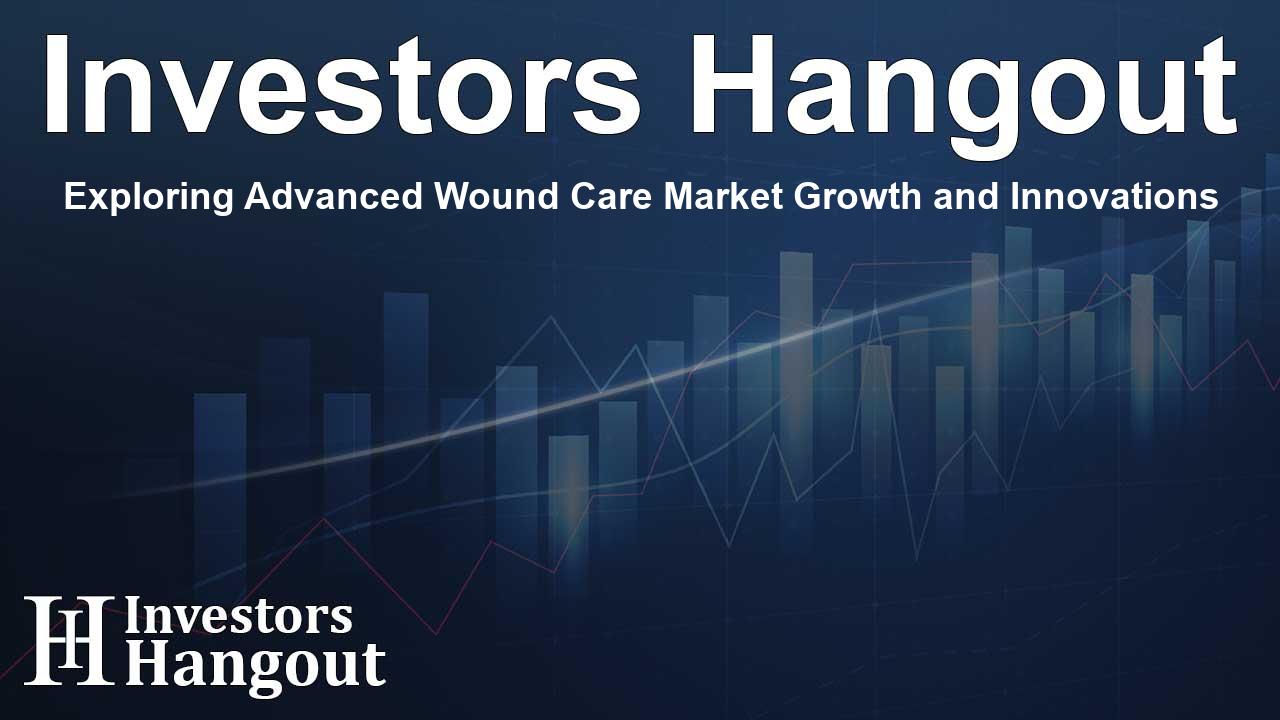Exploring Advanced Wound Care Market Growth and Innovations

Advanced Wound Care Market Trends and Growth
The Advanced Wound Care Market is set to grow significantly, with projections hinting at a valuation of USD 14.87 billion by the end of the decade. This growth is underpinned by a rising demand for enhanced wound healing technologies, propelled by various influencing factors. The factors driving this demand include a growing number of surgical procedures, traffic incidents, and cases of trauma and burns. Furthermore, the increasing rates of lifestyle diseases are obstructing the body’s natural healing capabilities, resulting in a greater need for sophisticated wound care solutions.
Market Analysis and Future Prospects
The detailed analysis of market trends indicates a positive trajectory for the Advanced Wound Care Market, maintaining a Compound Annual Growth Rate (CAGR) of 4.79%. The diversity within this market spans numerous products and applications, adjusting effectively to the evolving demands across different geographical areas. As chronic diseases become more prevalent, the necessity for advanced wound care products has surged.
Key Factors Fueling Market Growth
Among the crucial aspects influencing the growth of the Advanced Wound Care Market is the alarming rise in chronic wounds attributed to diabetes, obesity, and an aging population. This demographic shift necessitates long-term care solutions to manage complex wound types. Additionally, advancements in treatment technologies, including bioactive therapies and smart wound monitoring tools, are reshaping how care providers manage wounds.
Current Trends in Wound Care Technology
The integration of cutting-edge technologies within wound healing products is reshaping the market landscape. Modern products are designed to possess smart features, such as moisture retention and antimicrobial properties, specifically aimed at accelerating healing processes. Innovations like hydrocolloids and antimicrobial dressings are tailored to prevent infections, ultimately enhancing recovery outcomes and reducing healthcare costs. Real-time data monitoring through smart dressings is also proving to enhance both patient outcomes and the efficiency of care delivery.
Economic Influences and Support Mechanisms
Healthcare expenditure and governmental backing are instrumental in the dynamic growth of the Advanced Wound Care Market. With increased allocations towards managing chronic illnesses, both global and local governments are prioritizing funding for innovative wound care solutions. Coverage policies provided by agencies help facilitate broader access to advanced treatments, promoting industry growth and encouraging the adoption of more effective wound care solutions in hospitals and at home.
Regional Market Dynamics
Regionally, North America is dominating, accounting for a notable share of the revenue driven by a robust healthcare infrastructure. A similar trend is observed in Europe, where high-income levels and the availability of qualified healthcare professionals foster market growth. On the contrary, the Asia-Pacific region is emerging with high growth potential, driven by increasing healthcare expenditures and disease prevalence.
Market Segmentation Insights
The segmentation of the Advanced Wound Care Market reveals distinct patterns across product types, applications, and end-users. Moist wound care devices are exhibiting strong market dominance—accounting for about 70.75% of total revenue share. In application contexts, chronic wounds lead the demand, while hospitals continue to be the primary users of advanced wound care solutions.
Leading Players and Competitive Strategies
The competitive landscape of the Advanced Wound Care Market features key industry players committed to maintaining market leadership through innovation. Entities like ConvaTec Group PLC and Smith & Nephew PLC are advancing their portfolios with new product launches and strategic alliances, ensuring their offerings remain at the forefront of market demands.
Innovations Recently Launched
In the latest developments within the sector, companies are introducing advanced products designed to meet evolving patient needs. Notable releases include innovative dressings such as silicone foam and advanced materials aimed at improving the efficacy of wound care. These products not only enhance healing times but also reduce complications associated with standard treatments.
Frequently Asked Questions
What is the projected market size for Advanced Wound Care by 2030?
The Advanced Wound Care Market is expected to hit USD 14.87 billion by 2030.
Who are the main companies in the Advanced Wound Care sector?
Leading firms include ConvaTec Group PLC, Smith & Nephew PLC, and Mölnlycke Health Care AB, among others.
What factors are driving the growth of Advanced Wound Care products?
The primary drivers are the rising incidence of chronic conditions that slow natural healing processes.
Which region is leading in the Advanced Wound Care Market?
North America remains the leader, holding 45.47% of the market share by revenue.
What is the top product segment within the Advanced Wound Care Market?
The moist wound care segment currently dominates the market with a 70.75% share.
About The Author
Contact Caleb Price privately here. Or send an email with ATTN: Caleb Price as the subject to contact@investorshangout.com.
About Investors Hangout
Investors Hangout is a leading online stock forum for financial discussion and learning, offering a wide range of free tools and resources. It draws in traders of all levels, who exchange market knowledge, investigate trading tactics, and keep an eye on industry developments in real time. Featuring financial articles, stock message boards, quotes, charts, company profiles, and live news updates. Through cooperative learning and a wealth of informational resources, it helps users from novices creating their first portfolios to experts honing their techniques. Join Investors Hangout today: https://investorshangout.com/
The content of this article is based on factual, publicly available information and does not represent legal, financial, or investment advice. Investors Hangout does not offer financial advice, and the author is not a licensed financial advisor. Consult a qualified advisor before making any financial or investment decisions based on this article. This article should not be considered advice to purchase, sell, or hold any securities or other investments. If any of the material provided here is inaccurate, please contact us for corrections.
